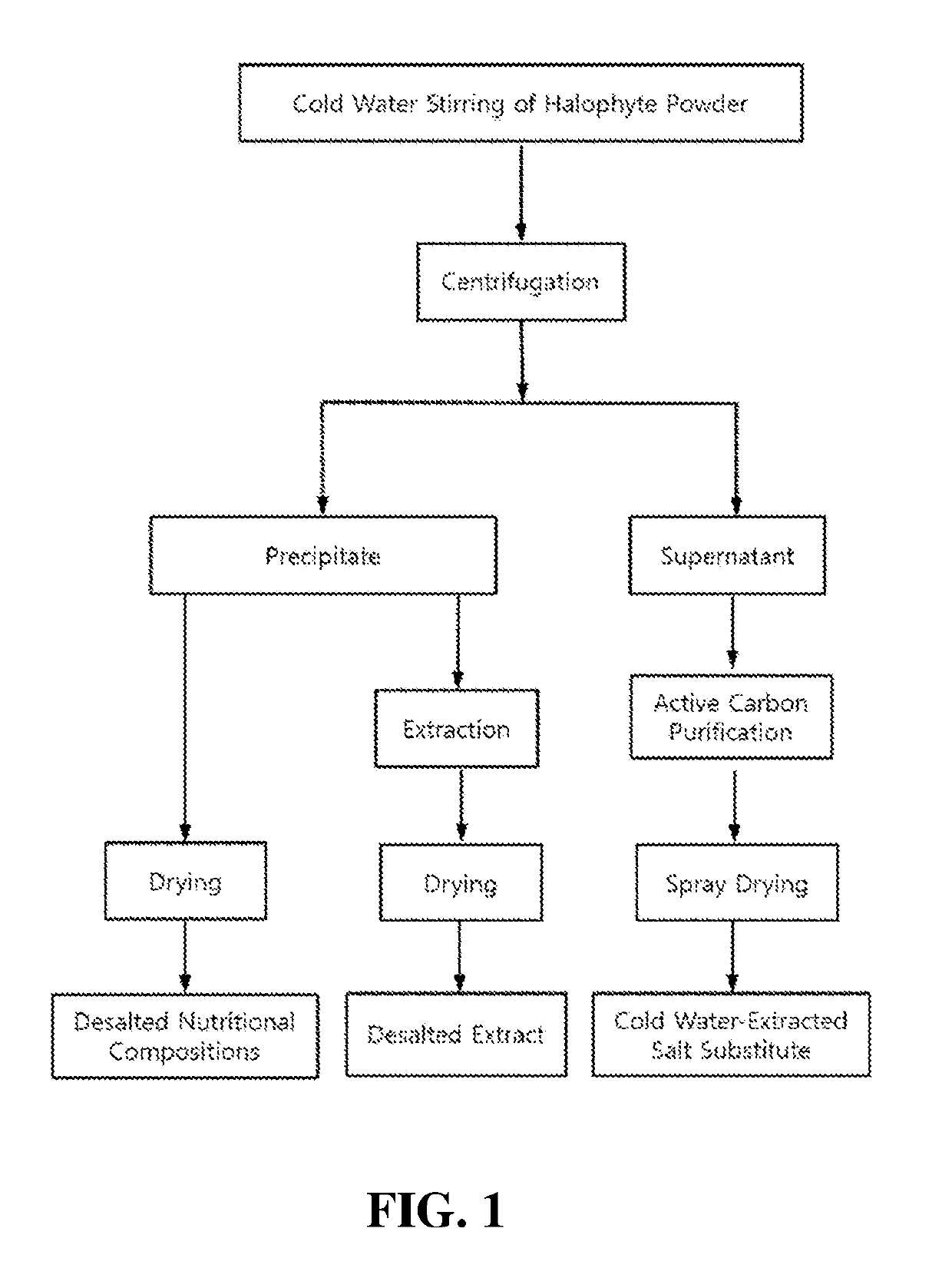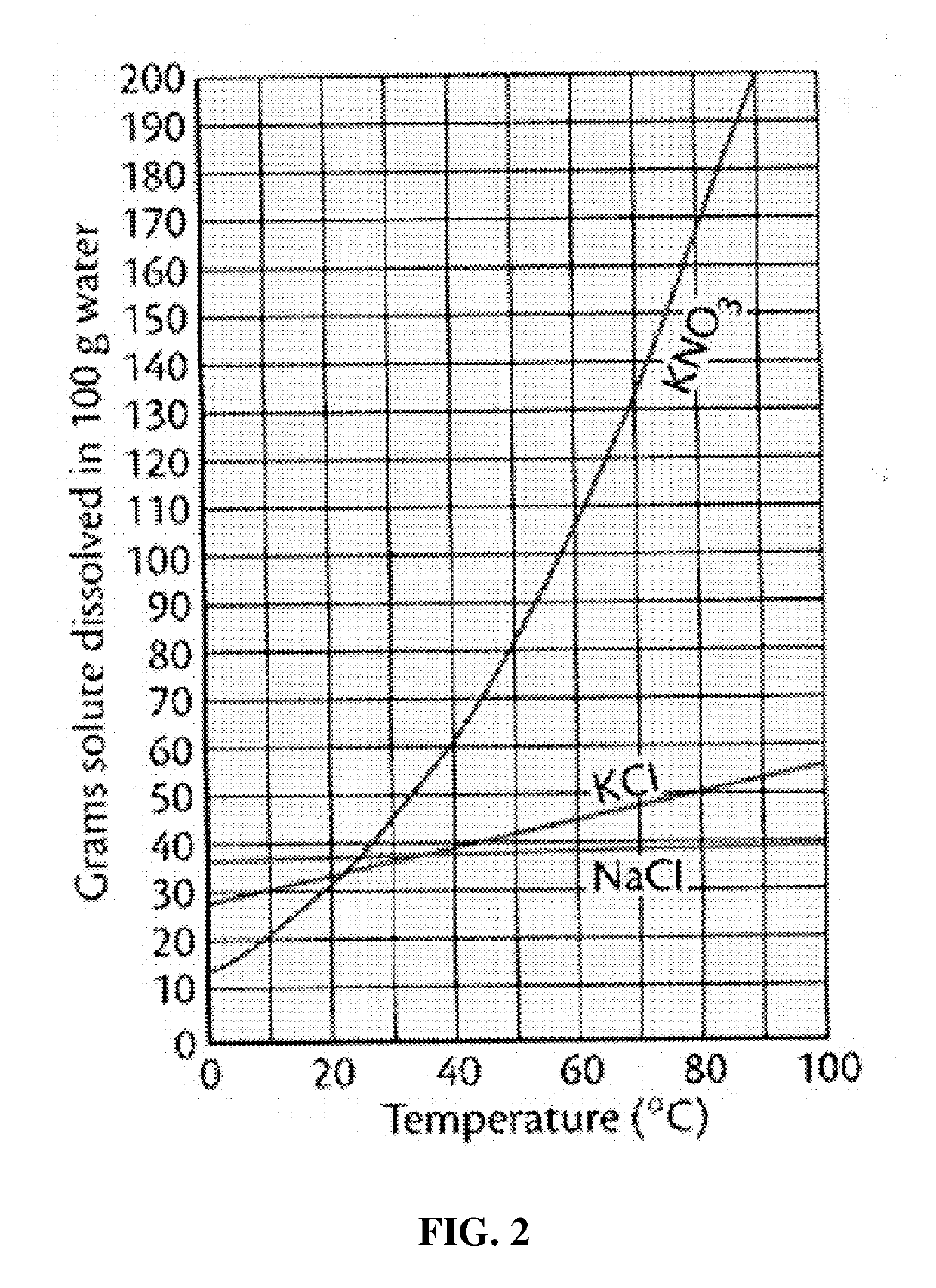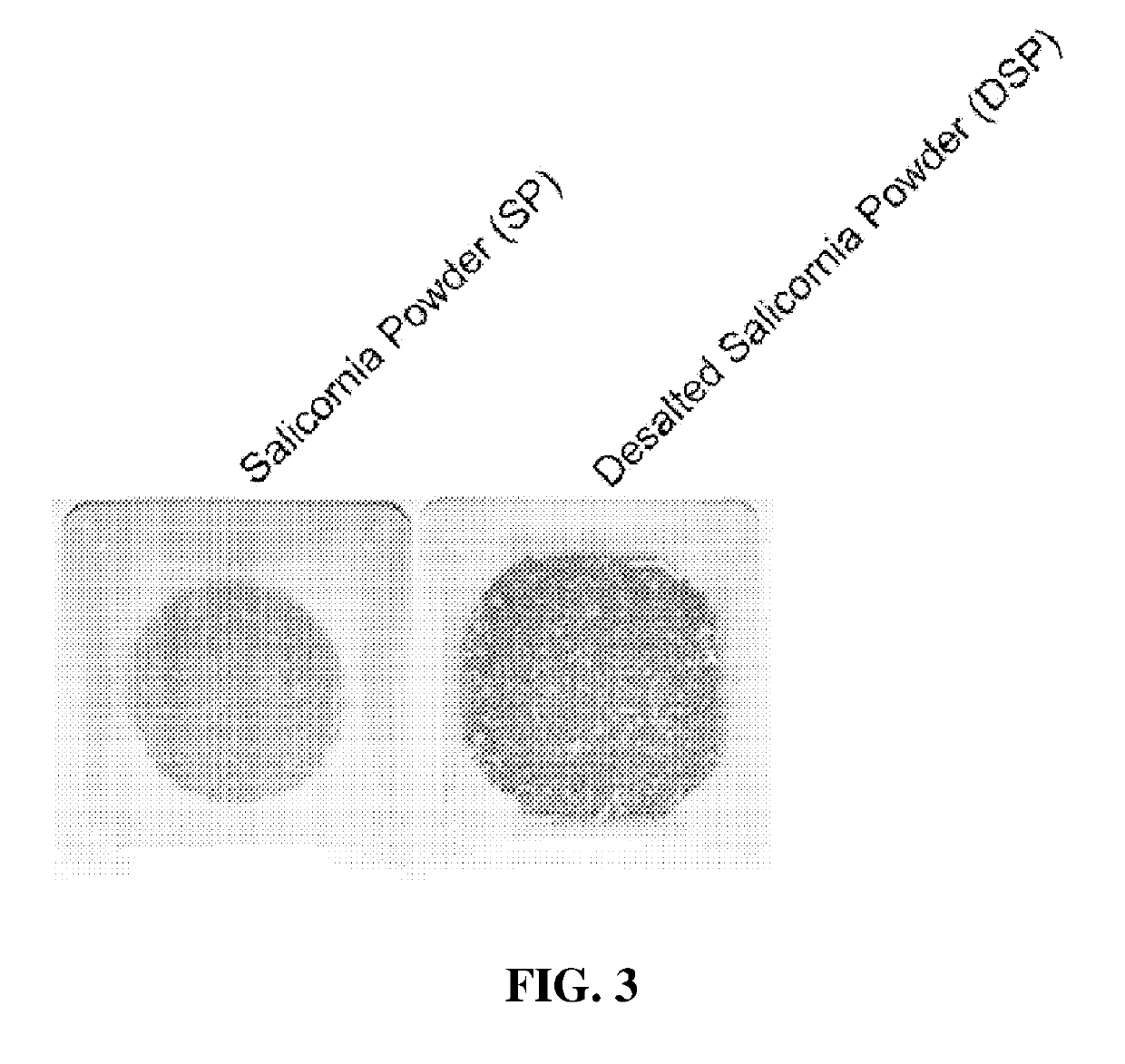Functionally reinforced desalted nutritional compositions from halophytes and preparation method thereof
a technology of nutritional compositions and desalted extracts, which is applied in the direction of drug compositions, plant/algae/fungi/lichens ingredients, and metabolic disorders, etc., can solve the problems of limited intake, already affecting food security, and limited intak
- Summary
- Abstract
- Description
- Claims
- Application Information
AI Technical Summary
Benefits of technology
Problems solved by technology
Method used
Image
Examples
example 3
on of Functionally Reinforced Desalted Extract from Halophytes (Hot-Water Extracts and Ethanol Extracts)
[0108]100 g of the functionally reinforced desalted nutritional compositions (desalted powders) from S. europaea, S. asparagoides and S. japonica, prepared in Example 2, were each added to 2 L of distilled water, reflux-extracted at 100° C. for 2 or 4 hrs, centrifuged, filtered, concentrated under pressure, and freeze-dried, thus giving halophyte-derived functionally reinforced desalted hot-water extracts.
[0109]100 g of the functionally reinforced desalted nutritional compositions (desalted powders) from S. europaea, S. asparagoides and S. japonica, prepared in Example 2 were each added to 2 L of 95% ethanol, reflux-extracted at 75±1° C. for 2 or 4 hrs, cooled to room temperature, and centrifuged. The supernatants were filtered and concentrated under pressure and freeze-dried, thus giving halophyte-derived functionally reinforced desalted ethanol extracts.
example 4
on of Salt Substitute Cold-Water-Extracted from Halophytes
[0140]100 g of halophyte dried powder (S. europaea, S. asparagoides and S. japonica) was added to 2 liters of cold water (4° C.), stirred at 300 rpm for 4 min, and centrifuged at 10,000 rpm for 20 min. The supernatant having a high salt content was separated while a desalted precipitate was recovered therefrom. The precipitate was further desalted in cold water once more according to the same method as described above, and the second desalted precipitate was recovered. The second supernatant was pooled together with the first supernatant and vacuum-concentrated at 90° C. to achieve a salinity of 18 to 19% and a total solid content of about 26 to 28%. After that, the concentrate was purified using activated carbon in an amount of 5% based on the total solid content, and spray-dried using a spray dryer (EYELA Spray Dryer SD1-1000, Japan), thereby yielding a halophyte-derived cold-water-extracted salt substitute. The cold-water-...
PUM
| Property | Measurement | Unit |
|---|---|---|
| thick | aaaaa | aaaaa |
| temperature | aaaaa | aaaaa |
| temperature | aaaaa | aaaaa |
Abstract
Description
Claims
Application Information
 Login to View More
Login to View More - R&D
- Intellectual Property
- Life Sciences
- Materials
- Tech Scout
- Unparalleled Data Quality
- Higher Quality Content
- 60% Fewer Hallucinations
Browse by: Latest US Patents, China's latest patents, Technical Efficacy Thesaurus, Application Domain, Technology Topic, Popular Technical Reports.
© 2025 PatSnap. All rights reserved.Legal|Privacy policy|Modern Slavery Act Transparency Statement|Sitemap|About US| Contact US: help@patsnap.com



